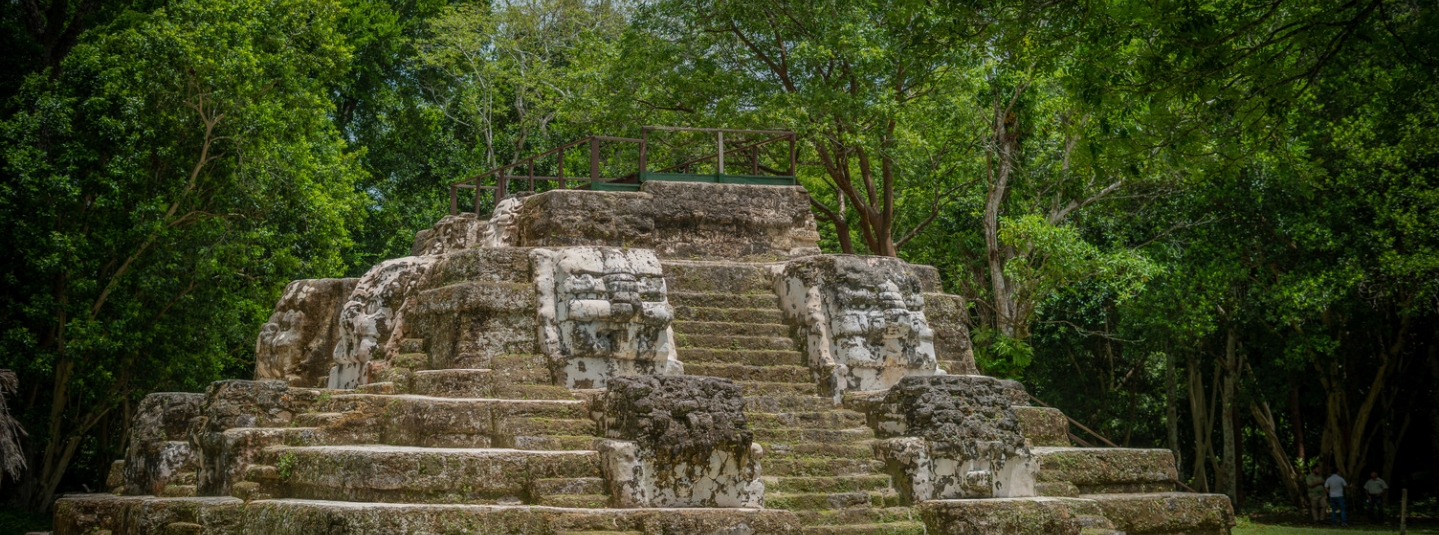

What is known as Selva Maya is actually the second largest tropical rainforest in the Americas, covering over 14 million hectares and stretching across Mexico, Belize, and Guatemala.
The region is immersed in Mayan culture: a strong link to the history written by the ancestors remains and Mayan languages are still spoken and perpetuated across the region. Today, the Selva Maya is home to many communities that share its cultural roots, including the Cooperativa Carmelita, which has 125 families, and the Petcacab ejido (an ejido is a piece of land farmed communally under a system supported by the state.), which has around 900 inhabitants.
In the three countries that the Selva Maya covers, forest management is reflected in different ways. In Mexico, communities own the land and decide how it is used, through a voting system. In Guatemala, the government grants the administration rights of the concessions to the communities for 25 years, and recently granted two community concessions up to 30 years.
In both cases, community concessions and ejidos, such as Carmelita or Petcacab respectively, with the support of the Rainforest Alliance, are implementing responsible forest management practices, verified by FSC. These attest to the high environmental and social standards applied locally. In total, more than 1.2 million hectares are under responsible forest management, with almost half a million hectares FSC-certified.
The management actions implemented within the framework of these countries are based on three pillars:
- An ecological pillar, whose objective is to extract only one tree per hectare every 40 years, allowing nature regeneration. Collection of seeds to build native tree’s nurseries to reforest other deforested areas by outsiders of the communities or ejidos. And finally, restore degraded areas where no governance exists, to preserve biodiversity and emblematic animal species such as the tapir, the jaguar and the guacamaya.
- An economic pillar, which aims to improve the livelihoods of communities, in particular by increasing diversified income; access to markets and seeking to develop the trade in lesser-known species (LKTS, Less Known Timber Species). Indeed, there are about twenty species from the Selva Maya that are highly sought after and marketed, while this one is home to hundreds of others!
Note that FSC Guatemala and FSC Mexico will participate in the Selva Maya Trade Mission 2024, which will take place from the 18th– 22nd November, this event aims to link community forest enterprises with global markets and to promote lesser-known tropical timber species from Selva Maya.
- Finally, a social pillar, which aims at the balanced integration of women and men in the workforce and the promotion of gender equality.
The Rainforest Alliance has been working with these concessions and ejidos organizations for more than 20 years providing technical assistance, introducing, and providing trainings on integral forest management, access to markets and advocating to enabling context for sustainability. Added to the equation is the harvesting of wood according to the strict FSC standards, with a wide range of applications (sawn timber, round wood, timber furniture, decks, railings, parquet floor, among others). With their commitment to responsible forest management, it is easy to understand the name "guardians of the forest" given to the communities of the Selva Maya!
Many thanks to Carlos Estrada, José Román Carrera and Emmanuelle Bérenger (Rainforest Alliance), Byron Hernández (Cooperativa Carmelita) and Celso Chan Rivas (Petcacab Ejido) for the interview that led to the writing of this article.
